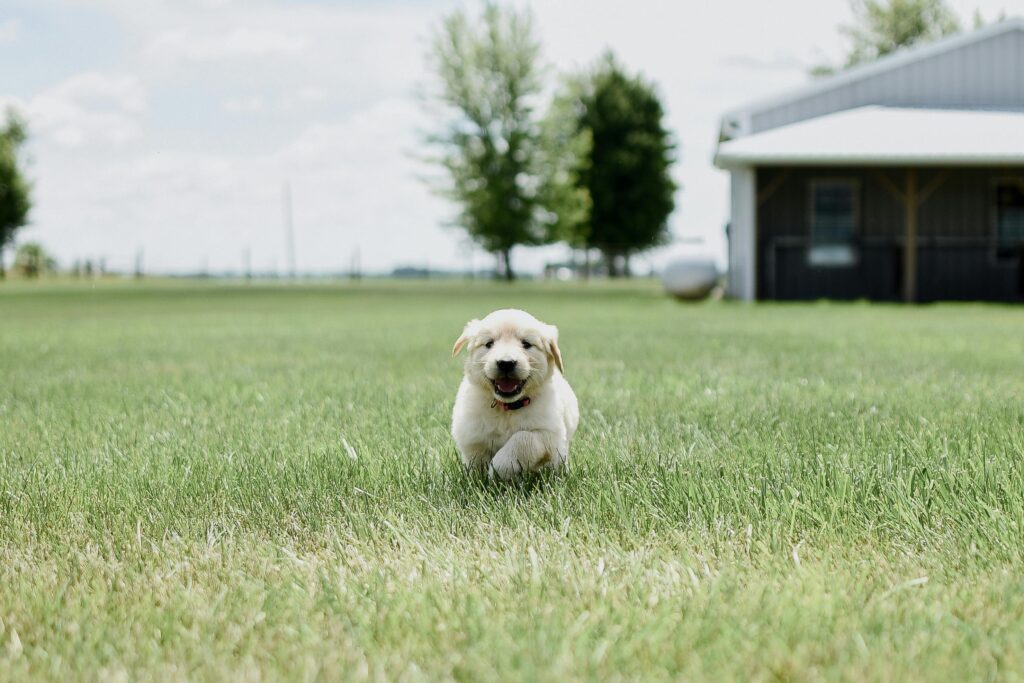Bringing home a puppy is an exciting experience, but timing can make a big difference if you plan to add a four-legged friend to your family. While there’s no universally “perfect” time of year to bring a puppy home, each season offers unique pros and cons that can affect training, bonding, and your overall experience as a new pet parent. So the question isn’t when is the best time to adopt a puppy, but rather when is the best time for you.
Spring: The Most Favorable Conditions
As you can imagine, spring is considered the sweet spot of puppy parenting due to the mild weather conditions. The biggest hurdle in bringing a puppy home is tackling house training. Potty training is much easier and more comfortable for both of you with favorable weather, except for the occasional rain shower or thunderstorm. With such mild weather, you’ll be more willing to go outside regularly, which is key for consistent potty training.
Spring also means longer days, which provide more daylight for walks, socialization, and outdoor play. With more people and pets out and about, exposing your puppy to various experiences is easier. With nature coming alive and the sun shining, it makes for a much more enjoyable introduction to bonding with your pup. Early social experiences shape how your dog interacts with the world around them, so having more time outdoors is a big plus.
While being more of a pro than a con, nature waking up can pose a few problems. Seasonal allergies (yours or your pup’s) can pose an unexpected challenge. Also, while fleas and ticks are a year-round threat, they are more prevalent in the spring, along with heartworms. Ensuring your puppy is current on vaccines and medications can easily solve these concerns. You’ll also want to be aware of any plants in your backyard that could potentially harm your furry friend.
Summer: Sunny Days of Socialization
Like spring, there is plenty of opportunity for outdoor fun, and potty training can be much more manageable. Summer break can also mean that kids are home to help with the responsibility and the care of keeping a puppy. Kids make excellent playmates to help your newest pack member bond with the family. However, summer also means vacations, which can interrupt the consistency needed in the early days of bonding and training.
Along with the parasites and plants being a continued concern into the summer months, hot days pose an additional problem. Some dog breeds are more prone to overheating than others, but it’s always good to familiarize yourself with the symptoms. Keeping walks and outdoor playtime shorter in higher temperatures while having water on hand to cool them down is an excellent start to combating the dog days of summer. You’ll also want to ensure the ground isn’t too hot by testing it with the back of your hand. If you can’t keep your hand on the ground for seven seconds, skip the walk and have some fun with indoor training.
Autumn: Cool and Calm
Many people don’t consider fall the ideal time to bring a puppy home due to the colder shift in temperature. However, the weather is still suitable for potty training and outdoor activities. A breed that thrives in the colder temperatures will be thrilled with a brisk walk among the falling leaves. The shorter days can limit your time to outdoor play, but indoor bonding can be just as rewarding. Once the busyness of back-to-school has ended, consistency in the daily routine can be achieved and give a strong start to structured training. There are fewer distractions to interrupt progress and the bonding that needs to develop between your furry friend and their new pack.
Autumn can create a cool and calm start for you and your pup. Socialization may be a little challenging to achieve when the weather throws a few curveballs. But overall, it can prove to be the perfect time to bring a puppy home.
Winter: Cozy Beginnings
Winter is a popular time to bring a puppy home and for good reason! Despite the cold weather, extended indoor time allows for good cuddling and relaxation. Puppies are still babies after all and need their downtime just as much as they need their exercise. While cold weather and snow can complicate potty training, all it takes is just a bit more patience. Plus, snow can be a fun (and adorable) first-time experience to share with your pup! Winter also allows for its own flavor of socialization with family and friends visiting for the holidays. Just be aware that some puppy temperaments thrive in the chaos, while others balk at it. Monitor your four-legged friend’s body language to help navigate their needs.
While you don’t have to worry as much about the pests found during the spring and summer months, it is still recommended that you keep up on any preventative medications. You’ll also want to keep up to date with vaccinations. Additionally, overheating is not a worry, but the cold is. Paws can crack and bleed when they get too cold, and steer clear of areas that use salt to de-ice. Most breeds shouldn’t stay outside long if the temperature is below 32 degrees, with one of the exceptions being a Bernese Mountain Dog. These dogs, even as puppies, will choose to lie in the snow and hesitate to come inside when they’re called.
No matter what time of year you decide to bring a puppy home, you’re guaranteed to make some wonderful memories! Just remember to register your puppy’s microchip and keep playdates with dogs that are up to date with their vaccines. Having adequate time for your newest pack member to settle in is also vital. If you need help finding the pick of the litter, we are more than happy to set up a chat with Kimberly, our preferred puppy trainer. If you’ve found your future companion, don’t hesitate to contact Gladys.



